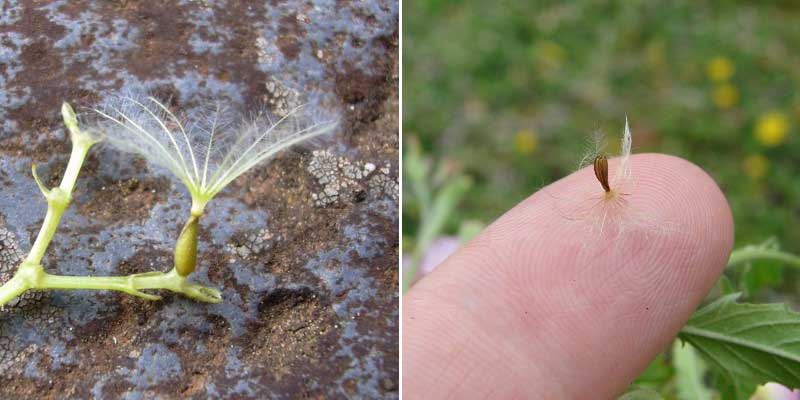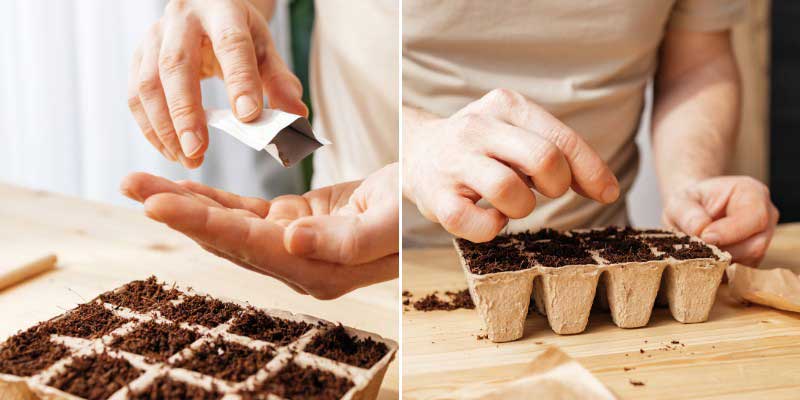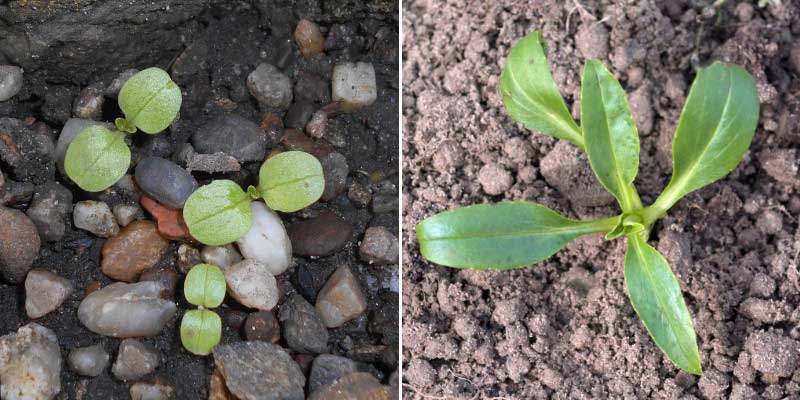Red valerian, also called Centranthus ruber, garden valerian or Spanish lilac, is a sturdy, highly floriferous perennial. It offers from May–June until August carmine-pink or white flowers (in the variety Centranthus ruber 'Albus'), grouped in very airy corymbs. They are melliferous, highly attractive to butterflies and pollinating insects. Red valerian is a very easy plant to grow, hardy and undemanding about soil type, provided it is well drained. It thrives in sunny rock gardens or on dry-stone walls. It often tends to self-sow, so it is possible to collect self-sown seedlings for replanting in garden. However, if it does not self-sow for you, or if you want a different variety, such as the white-flowered one, discover how to multiply it by sowing or division!
For everything about its cultivation, discover our complete sheet "Spanish lilac, Valerian: planting, growing and maintenance".
By sowing
Sowing is a simple and economical method to multiply Red valerian. You can collect seeds from a plant that has finished flowering, or buy them if you do not have a plant.

When to sow Red valerian?
Red valerian is sown in spring, from March to June in pots, and in May–June in open ground.
How to sow in pots?
Equipment required:
To sow Red valerian you will need:
- Seeds of Centranthus ruber.
- Seed compost.
- Pots or buckets.
- Watering can with rose.
- A mini greenhouse or a cold frame (facultative).
How to do it?
- Fill pots with light, free-draining compost, ideally seed compost.
- Firm compost lightly.
- Scatter seeds on the surface, spacing them about 1 cm apart.
- Cover seeds with a fine layer of compost (about 0.5 cm).
- Water with a fine spray using the watering can so as not to displace the seeds.
- Place pots in a bright spot, out of direct sun, and keep compost moist during germination.
- If you have a mini greenhouse or a cold frame, you can place your sowings there to encourage development.
- Germination of Red valerian seeds generally takes between 20 and 30 days.
- When plants have developed 2 to 4 leaves, prick out into individual buckets.
- Harden young plants off gradually to outdoor conditions before planting out permanently in garden.

How to sow in open ground?
Equipment required:
- Seeds of Centranthus ruber.
- Spade or fork to loosen soil.
- Rake to refine seedbed.
- Compost.
- Watering can.
How to do it?
- Start by working the soil with a spade, remove weeds and refine the seedbed with a rake.
- Broadcast the seeds evenly across the area.
- Cover the seeds with a fine layer of compost.
- Firm down lightly with the back of the rake.
- Water generously with a fine spray.
- Continue watering regularly to keep soil moist until seeds germinate.
- As soon as plants have developed their first 4 leaves, thin out leaving one plant every 40 cm or so. Keep only the healthiest plants.

By dividing clumps
It is also very simple to multiply valerian by division. This technique consists of separating a mature clump into several sections, which are then replanted to form new plants. Division produces well-developed plants more quickly than sowing.
When to divide clumps of Red valerian?
Clump division is preferably done in early spring, in March–April, but is also possible in autumn, between September and November. You can divide clumps every 3 to 4 years to maintain plant vigour and floriferousness.
Equipment required:
To divide clumps of Red valerian you will need:
- Spade or fork.
- A pruning shear or a knife that is clean and disinfected.
- Watering can.
How to do it?
- Choose a large clump of valerian, healthy and well developed.
- Using a spade or fork, dig it up carefully.
- Shake soil from around roots to free them and make division easier.
- Separate the clump into several sections, ensuring each has some roots.
- Cut away any damaged roots and dried or unsightly stems with pruning shear or knife.
- Replant sections immediately into well-worked soil, spacing about 40 cm between plants.
- Water copiously after planting to encourage establishment.
- Keep soil moist during first weeks after planting.

































Comments